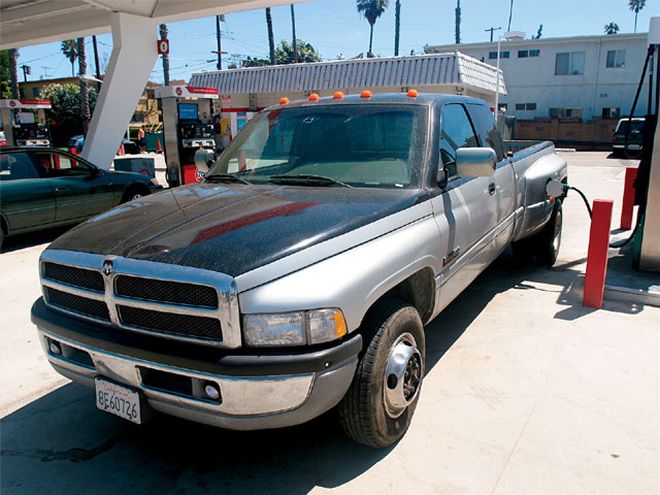
| fitch Fuel Catalyst front View
Diesel is expensive, and it isn't getting any cheaper. European nations have complained for years about gas and diesel prices that can be as high as $5 per gallon, and it looks like it's finally our turn. With this in mind, we took a look at the Fitch Fuel Catalyst, a device that's reported to increase mileage by 5 to 12 percent.
We have to come right out and admit that we're not exactly sure how it works. There's a canister that houses a bunch of metallic rods that look like giant match sticks. We're comfortable with things like propane, which acts as an added fuel and increases fuel economy, but we were stumped when we took a look at the Fitch.
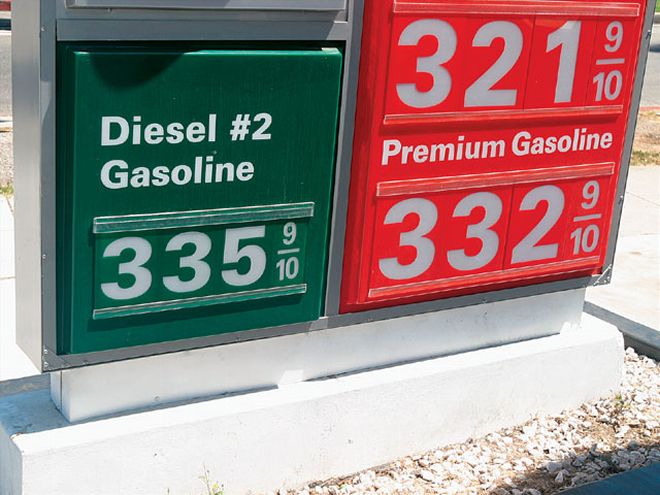
| fitch Fuel Catalyst diesel Sign
We know it has something to do with an additional pretreatment process of the fuel, but we thought it would be more fun for us to test one than to try and explain how it functions. What was interesting is we actually talked to some other magazine guys about the product, and they swore it worked. We were eager to check it out and see if our results were the same as theirs.
The Fitch Fuel Catalyst installation was fairly straightforward because the Fitch is a bolt-on design that mounts on the intake. However, we would be changing turbos and intercoolers, and we were worried about nitrous backfires, so we mounted it along the frame-out of the way of potential danger.
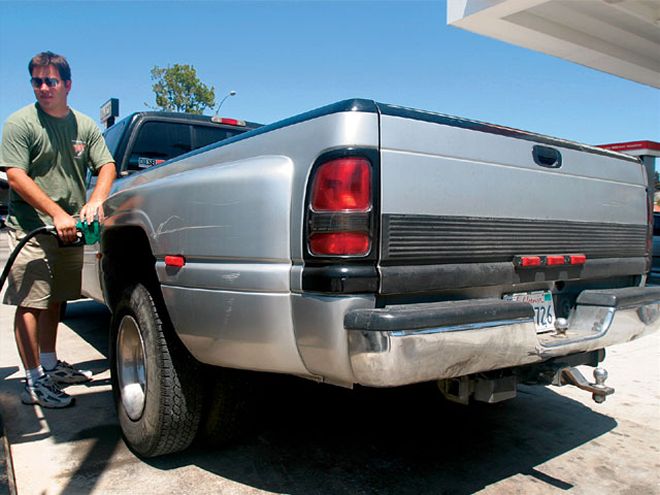
| With the Fitch installed, we hoped we would see an improvement at the pump.
With the Fitch installed, it was time for us to get some fuel-economy numbers. Our first trip to the pump netted us 23.25 mpg, down from an earlier high of 24.10 mpg. Our mileage had actually dropped, so we looked for a culprit. Since our last test, we had installed a new transmission, but that couldn't be the cause, could it? We got to thinking and realized the billet converter and SFI flexplate we installed might have been just as heavy as the mechanical cooling fan we had taken off (which increased our fuel mileage by 3 mpg), so we unhooked the Fitch and ran our test loop again. Running without the catalyst under the same conditions (constant 70-mph freeway driving) netted us 22.10 mpg.
Once we got our variables out of the way and had some solid test results, we found that the thing actually worked. The people at Fitch also informed us that it may take a few tanks to see significant gains. As for us, we got a 1.15-mpg increase with the Fitch driving under very light load conditions. If you're looking for a way to increase your fuel mileage, you might want to check out the Fitch Fuel Catalyst. At about $300, it isn't a bad way to fight high fuel prices.
Old transmission(Fitch Fuel Catalyst not installed)24.10 mpg
New transmission(Fitch Fuel Catalyst not installed)22.10 mpg
New transmission(Fitch Fuel Catalyst installed)23.25 mpg
 | fitch Fuel Catalyst front View
Diesel is expensive, and it isn't getting any cheaper. European nations have complained for years about gas and diesel prices that can be as high as $5 per gallon, and it looks like it's finally our turn. With this in mind, we took a look at the Fitch Fuel Catalyst, a device that's reported to increase mileage by 5 to 12 percent.
We have to come right out and admit that we're not exactly sure how it works. There's a canister that houses a bunch of metallic rods that look like giant match sticks. We're comfortable with things like propane, which acts as an added fuel and increases fuel economy, but we were stumped when we took a look at the Fitch.
| fitch Fuel Catalyst front View
Diesel is expensive, and it isn't getting any cheaper. European nations have complained for years about gas and diesel prices that can be as high as $5 per gallon, and it looks like it's finally our turn. With this in mind, we took a look at the Fitch Fuel Catalyst, a device that's reported to increase mileage by 5 to 12 percent.
We have to come right out and admit that we're not exactly sure how it works. There's a canister that houses a bunch of metallic rods that look like giant match sticks. We're comfortable with things like propane, which acts as an added fuel and increases fuel economy, but we were stumped when we took a look at the Fitch.
 | fitch Fuel Catalyst diesel Sign
We know it has something to do with an additional pretreatment process of the fuel, but we thought it would be more fun for us to test one than to try and explain how it functions. What was interesting is we actually talked to some other magazine guys about the product, and they swore it worked. We were eager to check it out and see if our results were the same as theirs.
The Fitch Fuel Catalyst installation was fairly straightforward because the Fitch is a bolt-on design that mounts on the intake. However, we would be changing turbos and intercoolers, and we were worried about nitrous backfires, so we mounted it along the frame-out of the way of potential danger.
| fitch Fuel Catalyst diesel Sign
We know it has something to do with an additional pretreatment process of the fuel, but we thought it would be more fun for us to test one than to try and explain how it functions. What was interesting is we actually talked to some other magazine guys about the product, and they swore it worked. We were eager to check it out and see if our results were the same as theirs.
The Fitch Fuel Catalyst installation was fairly straightforward because the Fitch is a bolt-on design that mounts on the intake. However, we would be changing turbos and intercoolers, and we were worried about nitrous backfires, so we mounted it along the frame-out of the way of potential danger.
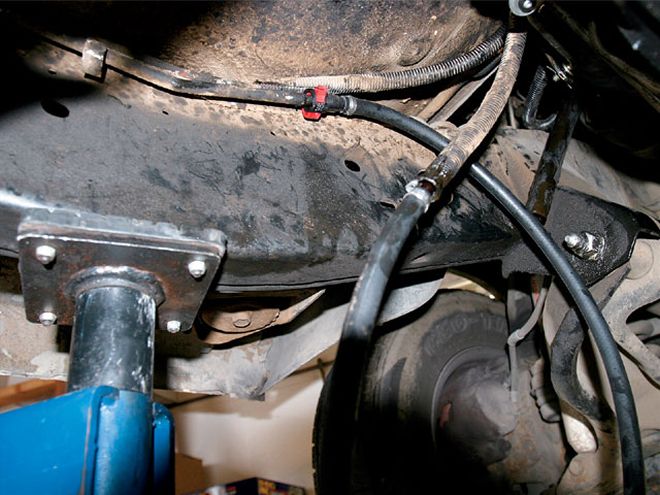
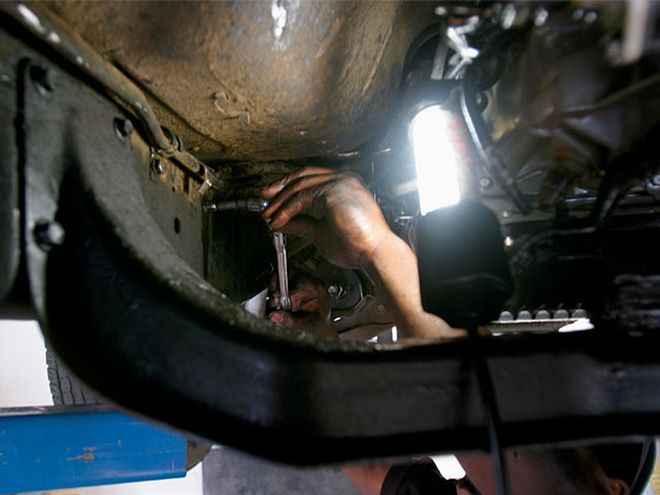
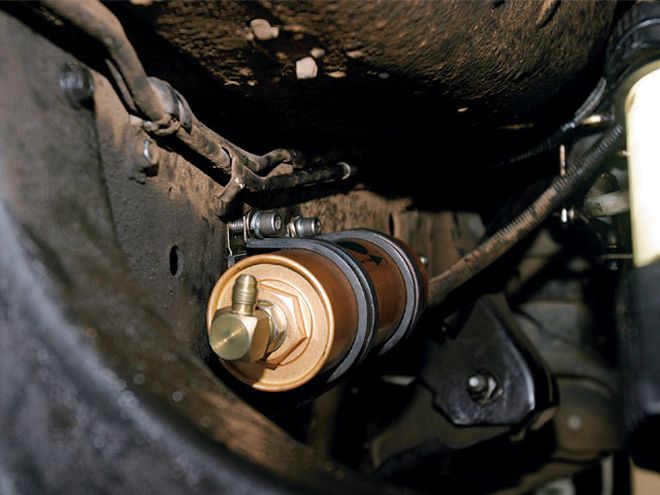
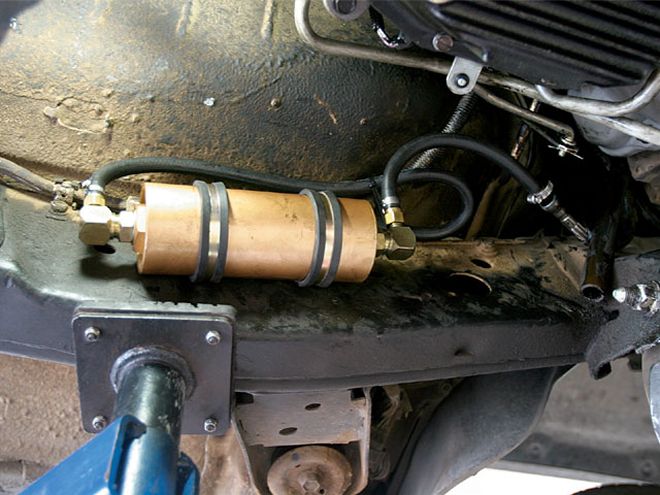
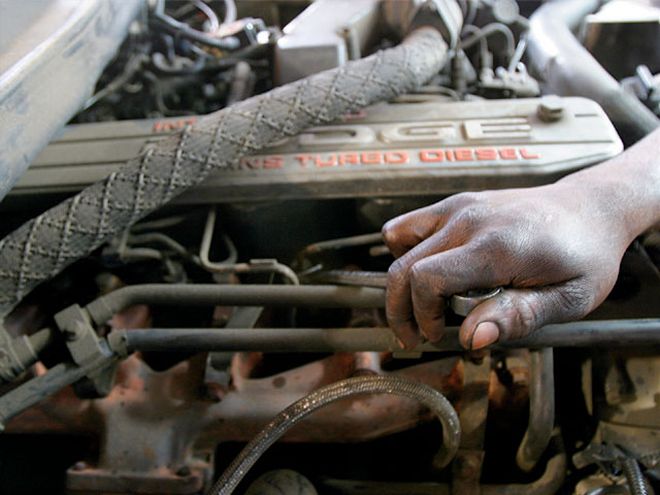
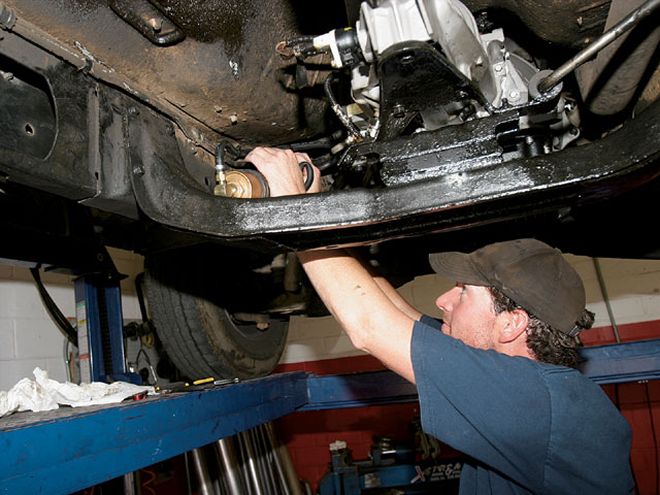
 | With the Fitch installed, we hoped we would see an improvement at the pump.
With the Fitch installed, it was time for us to get some fuel-economy numbers. Our first trip to the pump netted us 23.25 mpg, down from an earlier high of 24.10 mpg. Our mileage had actually dropped, so we looked for a culprit. Since our last test, we had installed a new transmission, but that couldn't be the cause, could it? We got to thinking and realized the billet converter and SFI flexplate we installed might have been just as heavy as the mechanical cooling fan we had taken off (which increased our fuel mileage by 3 mpg), so we unhooked the Fitch and ran our test loop again. Running without the catalyst under the same conditions (constant 70-mph freeway driving) netted us 22.10 mpg.
Once we got our variables out of the way and had some solid test results, we found that the thing actually worked. The people at Fitch also informed us that it may take a few tanks to see significant gains. As for us, we got a 1.15-mpg increase with the Fitch driving under very light load conditions. If you're looking for a way to increase your fuel mileage, you might want to check out the Fitch Fuel Catalyst. At about $300, it isn't a bad way to fight high fuel prices.
Old transmission(Fitch Fuel Catalyst not installed)24.10 mpg
New transmission(Fitch Fuel Catalyst not installed)22.10 mpg
New transmission(Fitch Fuel Catalyst installed)23.25 mpg
| With the Fitch installed, we hoped we would see an improvement at the pump.
With the Fitch installed, it was time for us to get some fuel-economy numbers. Our first trip to the pump netted us 23.25 mpg, down from an earlier high of 24.10 mpg. Our mileage had actually dropped, so we looked for a culprit. Since our last test, we had installed a new transmission, but that couldn't be the cause, could it? We got to thinking and realized the billet converter and SFI flexplate we installed might have been just as heavy as the mechanical cooling fan we had taken off (which increased our fuel mileage by 3 mpg), so we unhooked the Fitch and ran our test loop again. Running without the catalyst under the same conditions (constant 70-mph freeway driving) netted us 22.10 mpg.
Once we got our variables out of the way and had some solid test results, we found that the thing actually worked. The people at Fitch also informed us that it may take a few tanks to see significant gains. As for us, we got a 1.15-mpg increase with the Fitch driving under very light load conditions. If you're looking for a way to increase your fuel mileage, you might want to check out the Fitch Fuel Catalyst. At about $300, it isn't a bad way to fight high fuel prices.
Old transmission(Fitch Fuel Catalyst not installed)24.10 mpg
New transmission(Fitch Fuel Catalyst not installed)22.10 mpg
New transmission(Fitch Fuel Catalyst installed)23.25 mpg